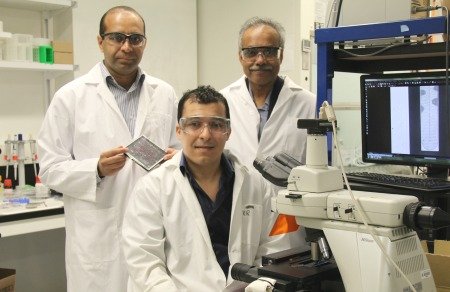The device was designed to look for and trap different types of bacteria, then find out which antibiotics are most effective against them.
Rather than growing bacterial cultures then testing
The main feature of the device is a
When bacteria are caught, the device sends out three different signals to researchers.
When bacteria is detected the cantilever’s mass changes, and it bends, explained Thomas Thundat, a professor in the Department of Chemical and Materials Engineering and the Canada Excellence Research Chair in Oil Sands Molecular Engineering. «So this gives us two signals: the mass change and the bending action.»
By shining infrared light on the bacteria, a third signal is sent, he added. If the bacterial absorbs the light it begins to vibrate, generating a minute amount of heat that sends a confirmation signal. Having three detection methods «means there is no ambiguity," Thundat said.
«By monitoring the interaction of light and bacteria, we can get highly selective detection of bacteria," said Faheem Khan, a researcher in Thundat’s lab. «It’s our moment of truth.»
With the bacteria trapped in the cantilever, different antibiotic drugs can be added to the device. And changes in the intensity of tiny oscillations of the cantilever signal to researchers whether the bacteria are alive or dead. The researchers then know which antibiotics the bacteria are susceptible to.

Faheem Khan, Hashem Etayash and Canada Excellence Research Chair Thomas Thundat have designed a device capable of detecting the presence of specific bacteria, then determining which drugs they are most susceptible to.
«We’re trying to find a way to fight bacterial resistance to drugs and prevent or at least decrease the spread of
The device can be used to test extremely small fluid samples, millions of times smaller than a rain droplet. Thundat says the size of the device is advantageous when you only want a very small sample, in settings such as a neonatal intensive care unit, or in situations where only very small samples are available.
The research was funded through the Government of Canada’s Canada Excellence Research Chairs program. The team has patented the technology and Etayash and Khan are hoping to design a


